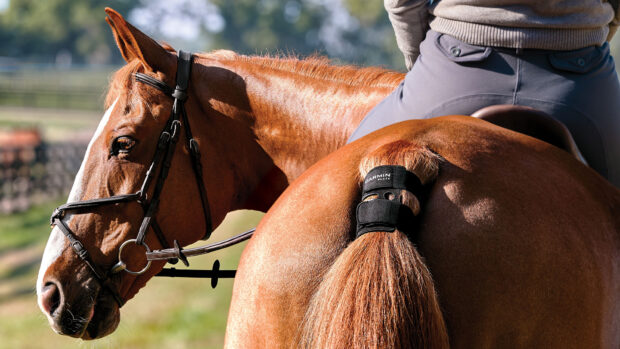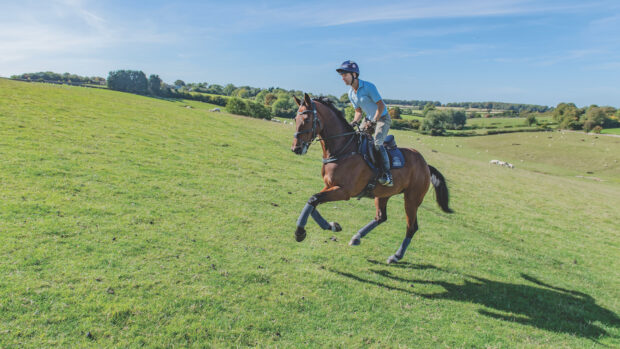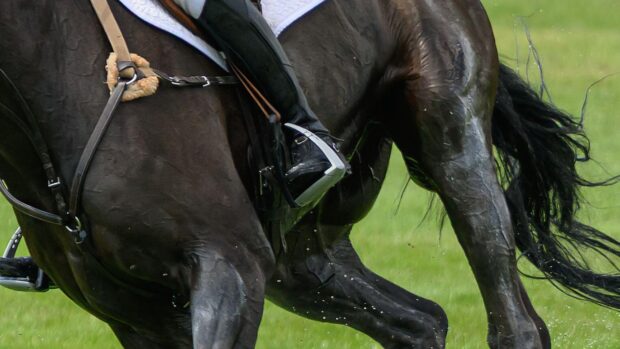Q. I have just bought a 15.2hh 3/4 TB who has previous experience hunting and show jumping. However, he has been turned away and not ridden for the past two years. I will be bringing him steadily back into work, but I am unsure how to feed in these circumstances. At present, he is getting haylage and occasionally soaked sugar beet, but little else. I intend to keep him turned out during the summer and stable him in bad weather. Can you give me any advice?
Christine Smy, independent nutritionist, answers: As your horse has been turned out for two years, you mustgo back to basics. You do not mention his current body condition and Thoroughbred-types are often not good doers. However, good quality spring and summer grass should provide adequate condition while your horse is getting fit.
Stage one
As he is used to haylage, continue to feed this, particularly while he is stabled. When it comes to concentrates, I would suggest that he is fed just a broad-spectrum supplement mixed with a handful of chaff. This applies particularly in your case as the horse has not been used to concentrates over the past couple of years.
Choose nutritious chaff, such as dried grass or alfalfa, and steer clear of heavily molassed products. You could dampen the chaff with a little soaked sugar beet pulp, which will also help the supplement to blend in, particularly if it is in a powdered form.
Stage two
When you are a month or so into your fitness programme and starting trot work, assess your horse’s body condition and energy levels. If you feel he needs an additional feed, introduce a low-energy, high-fibre cube. This will mimic his natural feeding regime, while providing a balanced diet.
As the work level increases, up the cubes to a total daily feed of 2kg (4.5lb) split between at least two feeds. Once you have reached these levels, the supplement will no longer be required.
Stage three
When you start canter work, you may choose gradually to change the cubes to a low-energy mix or cube. Replace the high-fibre cubes over a week or so and stop once your horse’s energy levels are adequate.
Stage four
If you’re thinking about competition work, you may decide to move up to a competition mix or cube. Again, replace the current ration weight for weight over a week and stop when you feel you have adequate energy and body condition.
Do not feed more than around 1.5kg per feed, and if you find you are feeding 4kg a day and your horse still requires more weight or energy, do not continue to increase the amount you are feeding.
Switch to a more appropriate feed, such as a conditioning ration for body weight or a race mix or cube for extra energy. Feed a specific amount and type of feed that you are happywith, rather than feeding something because you think you should.
| Click here to subscribe to HORSE magazine, which is packed with horsecare features every month |



